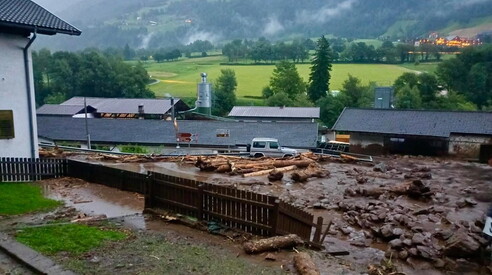More landslides in Italy? No, we just know how to spot them better.


Handle
The study
The area at risk from landslides has increased by 15 percent; the area at risk has increased from 55,400 to 69,500 square kilometers in three years, equal to 23 percent of the country. However, ISPRA scientists warn: these increases "are primarily due to more detailed studies conducted by the authorities." The report "Hydrogeological Instability in Italy"
Landslides are increasing in Italy. Even better: we're better able to recognize landslides and identify them where we couldn't see them before . This is confirmed by ISPRA, the Italian National Institute for Environmental Protection (the scientific arm of the Ministry of the Environment), in the new edition of the report "Hydrogeological Instability in Italy."
The study reveals much more, including evidence that beaches are growing and the coastline has gained about thirty kilometers, a boon for both active and passive summer beachgoers. The new hydrogeological instability map, based on 2024 data, uses a harmonized mapping system across Italy for the first time, allowing for a uniform interpretation thanks to contributions from Aineva, the Carabinieri Meteomont service, the regional governments, and ARPA. Here are the report's key figures: The Italian surface area at risk for landslides, as identified in hydrogeological management plans, has increased by 15 percent; the area at risk of landslides has increased from 55,400 to 69,500 square kilometers in three years, equal to 23 percent of the country .
The most significant increases in landslides are recorded in the province of Bolzano (+61.2 percent), Tuscany (+52.8 percent), Sardinia (+29.4 percent), and Sicily (+20.2 percent). But are these more landslides? No, ISPRA scientists warn: these increases "are primarily due to more detailed studies conducted by district basin authorities and autonomous provinces." The areas classified as most at risk (the "high" and "very high" levels) have risen from 8.7 percent to 9.5 percent of the Italian surface area. 94.5 percent of Italian municipalities contain areas at risk of landslides, floods, coastal erosion, or avalanches: there's no escape, and Italy remains among the European countries most exposed to landslide risk. There's even an inventory of landslides, which has individually listed more than 636,000 landslides.
This is a significant finding considering that approximately 28 percent of these phenomena are characterized by extremely rapid dynamics and high destructive potential, often with dramatic consequences, including loss of life. In 2024, the population at risk of landslides in Italy is 5.7 million, of which 1.28 million live in high-risk areas, equal to 2.2 percent of the total population. Over 582,000 families, 742,000 buildings, nearly 75,000 local businesses, and 14,000 cultural assets are at risk in high-risk areas.
And the beaches? Good news for beachgoers: ISPRA says we've gained 30 kilometers of additional shoreline . Here's the details. From 2006 to 2020, significant changes in the coastline—that is, more than 5 meters of widening or narrowing—were detected across over 1,890 kilometers of beaches, equal to approximately 23 percent of the entire Italian coastline including rocks, or 56 percent of the beaches alone. Interesting data: Italian beaches extend over a total length of 3,400 kilometers and—from the narrow strips of sand a few meters wide in Liguria to the endless strands of the Veneto region—extend a total area of approximately 120 square kilometers. Specifically, 965 kilometers of beaches have widened and deepened by more than 5 meters, while erosion has been detected along 934 kilometers of beaches, resulting in a narrowing of the shoreline. The scientific institute expresses its satisfaction that the prevalence of beach advance over beach erosion appears to be "a reversal of trend" and, although not uniform across all regions, "should be considered a probable consequence of the numerous and ongoing efforts made over the years to mitigate coastal instability with beach nourishment and protection measures," such as artificial reefs placed in front of the beaches or groynes of rocks jutting out into the open sea. From the sea to the mountains. In terms of avalanches, the area potentially subject to large snowfalls is 9,283 square kilometers, equal to 13.8 percent of the mountainous area above 800 meters. Finally, a political comment. Here's Vannia Gava, Friuli's Undersecretary and Deputy Minister for the Environment, a Lega party member: "The government has allocated over 1.5 billion euros over the three-year period to improve environmental safety, and is negotiating another 350 million with the regions, to which will be added 250 million in FSC funds."
More on these topics:
ilmanifesto





